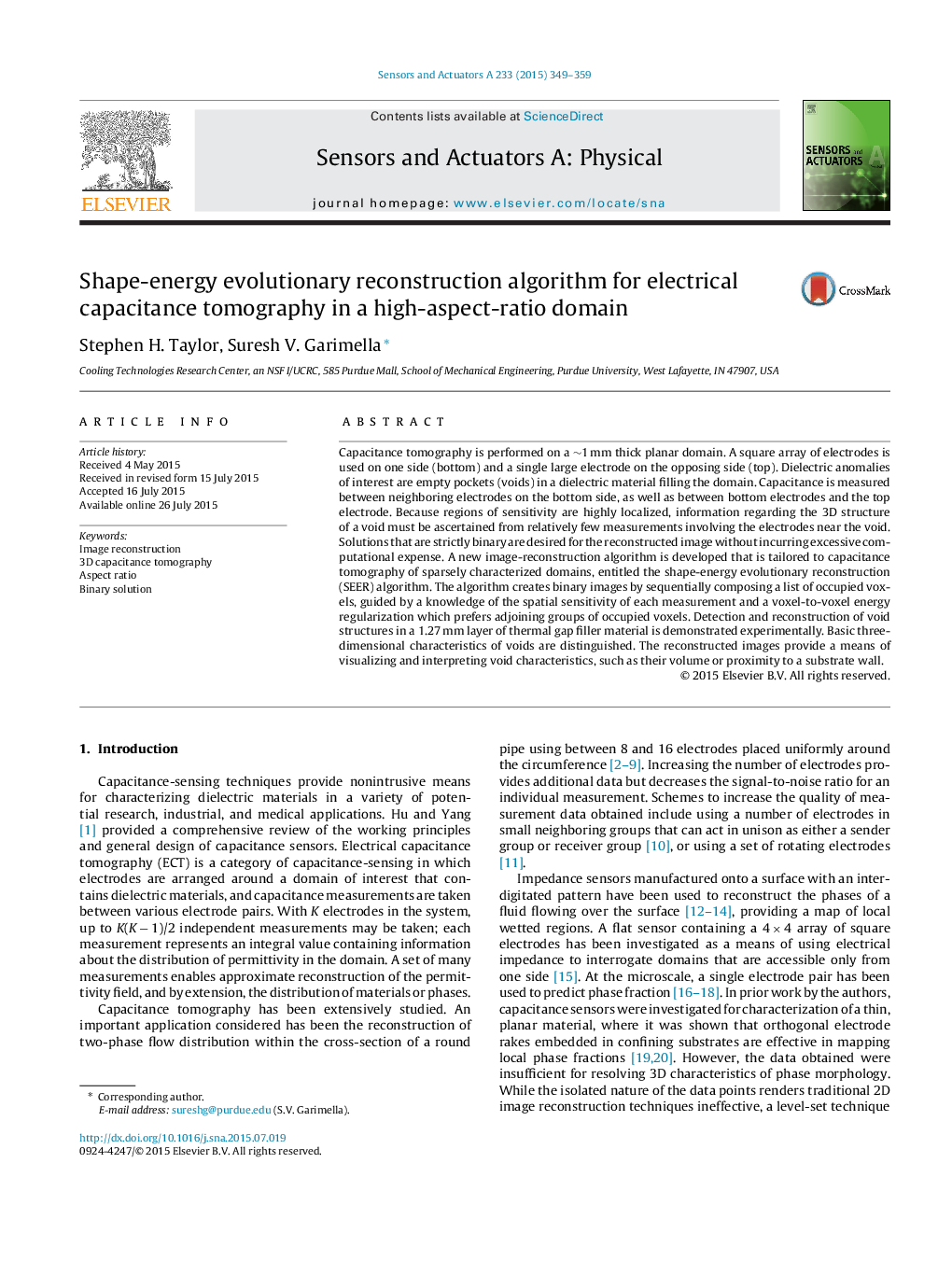| Article ID | Journal | Published Year | Pages | File Type |
|---|---|---|---|---|
| 7135640 | Sensors and Actuators A: Physical | 2015 | 11 Pages |
Abstract
Capacitance tomography is performed on a â¼1Â mm thick planar domain. A square array of electrodes is used on one side (bottom) and a single large electrode on the opposing side (top). Dielectric anomalies of interest are empty pockets (voids) in a dielectric material filling the domain. Capacitance is measured between neighboring electrodes on the bottom side, as well as between bottom electrodes and the top electrode. Because regions of sensitivity are highly localized, information regarding the 3D structure of a void must be ascertained from relatively few measurements involving the electrodes near the void. Solutions that are strictly binary are desired for the reconstructed image without incurring excessive computational expense. A new image-reconstruction algorithm is developed that is tailored to capacitance tomography of sparsely characterized domains, entitled the shape-energy evolutionary reconstruction (SEER) algorithm. The algorithm creates binary images by sequentially composing a list of occupied voxels, guided by a knowledge of the spatial sensitivity of each measurement and a voxel-to-voxel energy regularization which prefers adjoining groups of occupied voxels. Detection and reconstruction of void structures in a 1.27Â mm layer of thermal gap filler material is demonstrated experimentally. Basic three-dimensional characteristics of voids are distinguished. The reconstructed images provide a means of visualizing and interpreting void characteristics, such as their volume or proximity to a substrate wall.
Related Topics
Physical Sciences and Engineering
Chemistry
Electrochemistry
Authors
Stephen H. Taylor, Suresh V. Garimella,
